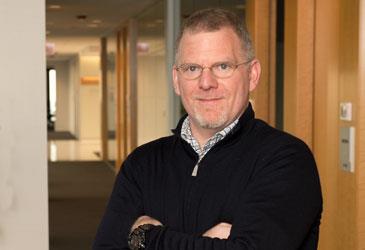Dietary and lifestyle changes are difficult to make. Once habits are formed, the effort that is required to change is often overwhelming for both patients and physicians. This week, Michael Rakotz, MD, director of chronic disease prevention with the AMA’s Improving Health Outcomes initiative, provides guidance from his own experience as a primary care physician on approaching heart healthy changes with patients.
AMA Wire®: In our Twitter poll, the public thought 2:1 that exercise would benefit their heart health more than dietary changes. Why is that?
Dr. Rakotz: It’s hard to know for sure why people voted this way. I think what it may come down to is that people not only associate exercise with heart health, but they also see it as much easier to work their way up to walking for 20 minutes a day than to make a long-term commitment to making significant changes to the way they eat. For many people, that may seem like too much work or too large of a commitment.
Adopting a healthy diet isn’t as simple as adding 20-30 minutes of physical activity a day. It’s more complicated. It means reducing or eliminating a lot of the foods we enjoy eating on a regular basis, like frappuccinos, cheeseburgers, french fries, cookies, and other fast food. And eating more of the things we need for heart health, like several servings a day of fruits and vegetables, plus fiber, whole grains, healthy fats like olive oil, nuts, legumes and fish—those kinds of changes can be really hard if people try to do them all at once.
Taking a brisk walk for 20 minutes a day, or 10 minutes two or three times a day is easier to achieve for most people. If you can do that five days a week, you are doing a lot of good for your heart and would significantly reduce your risk of developing heart disease over time. And you can start with a much shorter amount of physical activity and gradually work your way up.
AMA Wire: How can physicians be more successful working with patients when they need to make their lifestyle healthier?
Dr. Rakotz: Physicians figure out pretty quickly that if they set the bar too high and people fail, then they’re going to lose the patient in that effort. By setting goals for smaller changes, or what I call “micro changes,” patients can have early successes—and have a better chance of sustaining them.
When it comes to helping people get in the habit of exercising, we’ll have much more success if we work with people to recommend physical activities that they enjoy doing. Patients are more likely to exercise and sustain it if they have fun doing it, and it makes them feel good, rather than if we try to scare them into doing it out of fear of having a cardiovascular event like heart attack or stroke.
For example, if a person likes to dance and hates to exercise in a gym, they can dance as a form of exercise—that’s fine. That is exercise, even if it’s not for 30 minutes. Maybe it’s five, 10 or 15 minutes. It’s a great way to start, and it’s much more likely to be sustainable in the long run if it makes them feel good and they enjoy it. Dr. Michelle Segar at the University of Michigan wrote a book on motivational behavior change that is excellent. It’s called No Sweat. Anyone who is serious about sustainable behavior change for fitness could learn something valuable from this book.
People who are already healthy need to maintain their wellness. There’s a difference in the way people perceive what you’re talking to them about when the topic is preventing illness versus maintaining wellness. I’d much rather talk to a person about maintaining wellness rather than preventing illness because it’s positive. I don’t like to use fear as a motivator. It works for some. But it certainly is not my first choice.
AMA Wire: Do patients often find out that they have a high risk of a cardiovascular event and then change their diet more dramatically or begin running five miles a day?
Dr. Rakotz: We’ve all seen this in our practices, either because of something that happened to a patient personally, or to someone they know. Because of an event, they go home and make radical change, like becoming vegan overnight. They get a scare and completely change the way they eat and create extreme changes in their lifestyle in diet or exercise or both. It might work for a short time. In the rare case, it might last. But most of the time, there is some short-term success (they might lose 20 or 30 pounds). But most of the time, they can’t sustain it. Again, I like to recommend starting small with those micro changes that are sustainable, then adding to them over time.
Eating healthy is tough, especially if you eat the typical American diet and try to change to a healthy diet overnight. I think most people would agree that doing that is extremely challenging. Whereas with exercise, about the only thing you have to give up is the time spent doing it. That’s not easy either. But I think for most of us it’s easier to start with a little bit of exercise than it is to be willing to give up the foods we want to eat.
AMA Wire: What are some small changes that physicians can recommend to patients?
Dr. Rakotz: We’re taught to tell people that when you go to the grocery store, you should park further away and get your five-minute walk to the front door. Take the stairs instead of the elevator when you can. Walk the dog a little longer. These small changes in behaviors create situations where you get more physical activity without really having to plan too much. And they really do add up.
There are two important factors when it comes to physical activity. People need to get aerobic exercise, which most know is good for their health. But there’s also the factor of being sedentary—sitting for hours at a time. If you sit at a job all day watching a computer screen and don’t get up for hours at a time, that is an independent risk factor for developing heart disease, regardless of the amount of aerobic exercise you get. It is a serious problem.
A recent study shows that each hour sitting may significantly increases your risk of heart disease. The authors conclude that too much sitting has a greater negative impact on a patient’s cardiovascular health than the benefits of exercise. People should avoid prolonged periods of being sedentary in any way that they can. Standing up once every hour for even one minute can reduce the harmful effects of sitting for long periods of time.
AMA Wire: Based on the various levels of risk patients may face, how can a physician express the appropriate level of urgency when it comes to the need for lifestyle change?
Dr. Rakotz: It depends on two things:
First, whether or not someone has already developed cardiovascular disease—if they’ve had an event, a heart attack or stroke for example—that raises the stakes. This is when we are talking about secondary prevention to keep them from having another event, which is a whole different ballgame. The urgency for them to change their behaviors becomes much more serious because the risk of developing another event is much higher.
Alternatively, if they don’t have a history of existing cardiovascular disease, the number of risk factors they have determines how aggressive we will be in trying to prevent that first event. Primary prevention of cardiovascular disease is based on healthy behaviors and risk factors, the sum of which can predict risk over time. Healthy behaviors (like not smoking, exercising, maintaining a healthy weight and eating a healthy diet) and having normal range total and HDL cholesterol, blood pressure and glycemic control will reduce a person’s risk of having a first cardiovascular event.
AMA Wire: If a patient is resistant to change, what do you do next?
Dr. Rakotz: If a patient is not motivated to change the way they eat or to lose weight, I will start wherever I can find an opening. For example, if they’re sedentary and willing to start moving more, I’ll start with that.
Regardless of whether they’re overweight or not, if I can increase their cardiovascular fitness over time, I can reduce their risk of heart attack, stroke and death at any weight. I will take whatever opening I can get and work with it.
As they become physically fit, they’ll likely have more energy, they’ll be stronger and they may even have less pain. Then they get it. They’ll hopefully be motivated to make another change—not because I told them they should but because they feel good—one thing at a time.




